 Some of you are maybe old enough to have heard the term “fan belt”. Back in the day, the radiator fan in your vehicle was turned by a belt that was driven by the engine. There are still belt driven fans, although most radiator fans are now driven by the serpentine belt. But most of the new vehicles now also have electric fans that draw fresh air across the radiator to cool it.
Some of you are maybe old enough to have heard the term “fan belt”. Back in the day, the radiator fan in your vehicle was turned by a belt that was driven by the engine. There are still belt driven fans, although most radiator fans are now driven by the serpentine belt. But most of the new vehicles now also have electric fans that draw fresh air across the radiator to cool it.
As coolant/antifreeze circulates in the cooling system, it captures heat from the engine and flows into the radiator. Air cools the radiator and the coolant in it before it sends it back into the engine to pick up some more heat. Now your engine has an ideal temperature range in which it is most efficient: it shouldn’t be too hot or too cool. The electric radiator fans help maintain the ideal temperature.
A switch mounted in a cooling system passage checks the temperature of the coolant. If the coolant is at the low end of the range, the switch turns off the fan motor. When the coolant rises to certain temperature, the switch turns on the fan. When you are running the air conditioning, the radiator fan will likely be turned on as well to help reduce the extra engine heat created by the load placed on it by the air conditioner.
A lot of Denver residents vehicles will actually have two radiator fans. One, both, or neither may be running at any given time depending on the conditions. When you are cruising at highways speeds, the air rushing over the radiator and around the engine will help control the heat. By contrast, stop and go driving around Denver doesn’t generate much natural air flow so the radiator fans will be working harder.
Some drivers may hear the sound of the radiator fan running after turning the vehicle off. This keeps the engine from heating excessively after it has been run and shut off.
Now the radiator fan motors and the switch are wear items that will eventually fail. If your temperature light comes on while driving, you have a cooling system problem. Your friendly and knowledgeable Express Car Care service adviser can test your entire cooling system, including the radiator fans, to determine what is causing the indicator light. Of course, serving the cooling system as recommended will help extend the life of all the components. Ask your Express Car Care service adviser if you are due for a cooling system service.

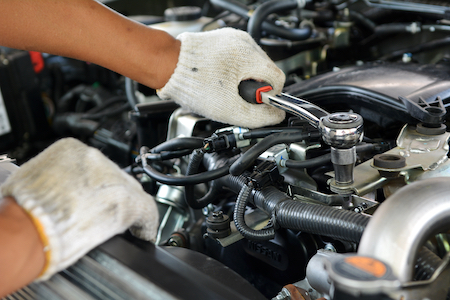 Brake pads are the least expensive part of this process.
Brake pads are the least expensive part of this process. 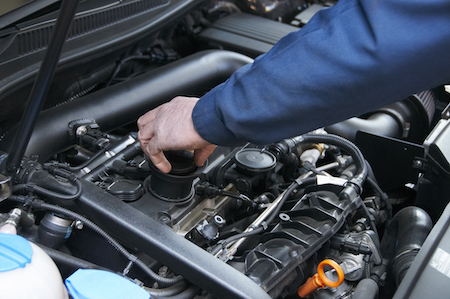 Reduced oxygen intake means the engine struggles to bring in enough air to feed into the system. This can lead to poor performance as well as inefficiencies. It can impact everything from acceleration to towing capabilities.
Reduced oxygen intake means the engine struggles to bring in enough air to feed into the system. This can lead to poor performance as well as inefficiencies. It can impact everything from acceleration to towing capabilities.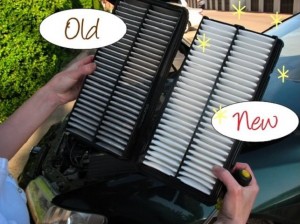 In order to run effectively, your engine needs clean air to burn fuel – and it needs a lot. In fact, a typical vehicle needs about 216,000 gallons of air for every tank of gas.
In order to run effectively, your engine needs clean air to burn fuel – and it needs a lot. In fact, a typical vehicle needs about 216,000 gallons of air for every tank of gas.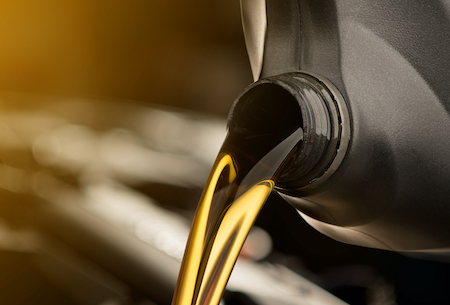 Synthetic motor oil is a human-made lubricant created by artificial chemical compounds as a substitute for petroleum-based oils.
Synthetic motor oil is a human-made lubricant created by artificial chemical compounds as a substitute for petroleum-based oils.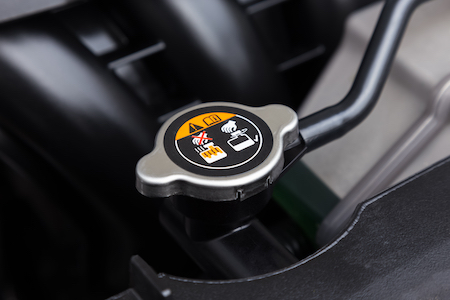 Enter your vehicle’s cooling system. It is designed to dispel heat no matter what the temperature is like outside. Winter or summer, cold or hot, engines can overheat if they aren’t running properly. It’s as important to ensure proper coolant levels in the winter months as it is in the summer.
Enter your vehicle’s cooling system. It is designed to dispel heat no matter what the temperature is like outside. Winter or summer, cold or hot, engines can overheat if they aren’t running properly. It’s as important to ensure proper coolant levels in the winter months as it is in the summer. There is another solution. Before you set out on your road trip, take action on a few car maintenance tips first. By doing a few little TLC tasks, you’ll ensure your car is in top shape when you hit the open road. You’ll decrease the chances of having an emergency stop. And you’ll keep your family safe and secure in the process.
There is another solution. Before you set out on your road trip, take action on a few car maintenance tips first. By doing a few little TLC tasks, you’ll ensure your car is in top shape when you hit the open road. You’ll decrease the chances of having an emergency stop. And you’ll keep your family safe and secure in the process.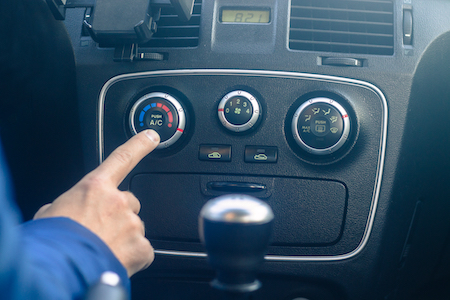 A car’s
A car’s  It’s natural for Denver drivers to be a little anxious when they buy a used car in the Denver area; it’s natural to worry that it has something wrong with it or that it hasn’t been well maintained. If it’s possible, bring the vehicle in for a used car inspection at Express Car Care. Your friendly and knowledgeable service adviser can tell you if there are current or emerging problems in the used car that you’re interested in purchasing. The peace of mind is well worth the price of the inspection service.
It’s natural for Denver drivers to be a little anxious when they buy a used car in the Denver area; it’s natural to worry that it has something wrong with it or that it hasn’t been well maintained. If it’s possible, bring the vehicle in for a used car inspection at Express Car Care. Your friendly and knowledgeable service adviser can tell you if there are current or emerging problems in the used car that you’re interested in purchasing. The peace of mind is well worth the price of the inspection service. Question: What can I do to improve my fuel economy?
Question: What can I do to improve my fuel economy?